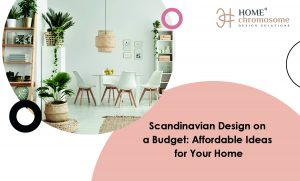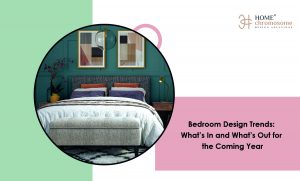Minimalist Interior Design: In today’s fast-paced and cluttered world, finding tranquility and fostering a sense of well-being has become increasingly challenging. Enter minimalist design – a style that celebrates simplicity, functionality, and the power of decluttering. In this blog, we will delve into the principles of minimalist design and explore how it can significantly enhance our overall well-being. From the physical environment to mental clarity, minimalist design offers a holistic approach to creating calm in our lives.

Understanding Minimalist Interior Design
Before we dive into the well-being benefits of Minimalist Interior Design, let’s gain a deeper understanding of its core principles and concepts. Minimalism as an art movement emerged in the mid-20th century, emphasizing the use of minimal elements to create powerful visual impact. Over time, this philosophy extended beyond art and design to various aspects of life.
- Simplicity: Minimalism celebrates the beauty of simplicity. It involves reducing elements to their essential forms, eliminating unnecessary ornamentation, and focusing on clean lines.
- Functionality: Every item in a minimalist space serves a purpose. Furniture, decor, and even the layout are carefully chosen to maximize functionality.
- Neutral Color Palettes: Minimalist Interior Design often features a limited color palette, typically consisting of neutral tones like white, black, gray, and beige. This contributes to the sense of calm and cohesion in the space.
The Essence of Minimalist Interior Design
Minimalism is more than just an aesthetic; it’s a philosophy that encourages intentional living and prioritizes what truly matters. At its core, Minimalist Interior Design embraces the concept of “less is more.” It advocates for removing unnecessary elements and focusing on essentials, resulting in spaces that are visually appealing, functional, and soothing.
Minimalist Interior Design #1 – Decluttering the Physical Space
One of the fundamental aspects of Minimalist Interior Design is decluttering. Clutter can create visual chaos and contribute to feelings of stress and overwhelm. By removing excess belongings and keeping only what serves a purpose, minimalist design promotes a sense of order and simplicity. A clutter-free environment can have a profound impact on our mental state, allowing us to think clearly and feel more relaxed.
Minimalist Interior Design #2 – Clean Lines and Simplicity
Minimalist Interior Design is characterized by clean lines, simple forms, and a limited color palette. This visual clarity promotes a sense of calm and tranquility. When our surroundings are free from unnecessary distractions, our minds can rest and recharge. The absence of intricate patterns and excessive decoration reduces visual noise, allowing us to focus on what’s truly important.
Minimalist Interior Design #3 – Functionality and Purpose
Every element in a minimalist-designed space serves a purpose. Furniture and decor items are chosen for their functionality rather than their ornamental value. This approach encourages mindfulness in our choices, helping us cultivate an environment that supports our daily activities without overwhelming us with excess.
Minimalist Interior Design Impact on Well-being
Minimalist Interior Design #1 – Reduced Stress and Anxiety
A cluttered environment can lead to heightened stress and anxiety levels. Minimalist Interior Design promotes a sense of calm by eliminating visual clutter and providing a serene atmosphere. The intentional arrangement of items and the open spaces in minimalist interiors create a soothing visual rhythm that can significantly reduce feelings of tension.
Minimalist Interior Design #2 – Improved Focus and Productivity
When our surroundings are streamlined and free from distractions, our ability to focus and be productive improves. Minimalist Interior Design minimizes the cognitive load by presenting only essential information, making it easier for our brains to process and retain information. This can lead to enhanced creativity and problem-solving skills.
Minimalist Interior Design #3 – Enhanced Relaxation
Minimalist spaces exude a sense of tranquility that can promote relaxation. The subdued color palette, uncluttered surfaces, and comfortable furnishings create an environment where we can unwind and recharge. Whether it’s a minimalist bedroom or a living room, these spaces provide a sanctuary from the demands of daily life.
Minimalist Interior Design #4 – Promotion of Mindfulness
Practicing mindfulness involves being fully present in the moment. Minimalist Interior Design encourages mindfulness by emphasizing the importance of intentional choices and conscious living. The act of curating a minimalist space encourages us to consider what truly adds value to our lives, fostering a deeper connection to our surroundings.
Incorporating Minimalist Interior Design
Minimalist Interior Design #1 – Start Small
Embracing minimalist design doesn’t mean completely overhauling your space overnight. Start small by identifying areas that could benefit from decluttering and simplification. Gradually work your way through different rooms, focusing on creating spaces that align with the principles of minimalism.
Minimalist Interior Design #2 – Quality Over Quantity
When selecting furniture and decor, prioritize quality over quantity. Invest in pieces that are well-crafted, durable, and aligned with your aesthetic preferences. This approach not only reduces clutter but also ensures that your belongings bring long-lasting satisfaction.
Minimalist Interior Design #3 – Mindful Curation
Practice mindful curation by regularly evaluating your possessions. Keep items that hold sentimental value or serve a practical purpose. Let go of items that no longer resonate with you or contribute positively to your space. The process of letting go can be liberating and contribute to your overall well-being.
Minimalist Interior Design #4 – Natural Elements and Light
Incorporate natural elements such as plants, wood, and stone into your Minimalist Interior Design. These elements add warmth and texture to your space while maintaining the clean aesthetic. Additionally, maximize natural light to create an open and airy atmosphere that enhances your mood.
Minimalist Interior Design #5 – Digital Minimalism
Minimalism doesn’t just apply to physical spaces; it’s equally valuable in the digital realm. Consider decluttering your digital life by organizing your files, unsubscribing from unnecessary emails, and minimizing the number of apps on your devices. A clean and organized digital environment can reduce digital overwhelm and improve your focus.
Minimalist Interior Design #6 – Multi-Functional Furniture
Invest in multi-functional furniture pieces. For instance, a sofa that can also serve as a guest bed or a coffee table with built-in storage. These pieces not only save space but also reduce the need for excessive furniture, promoting a minimalist aesthetic.
Minimalist Interior Design #7 – Limit Visual Distractions
Consider hiding or organizing electronic cords and cables to reduce visual distractions. Cable management solutions, such as cable clips and organizers, can help maintain the clean lines of your minimalist space.
Minimalist Interior Design #8 – Minimalist Art and Decor
When choosing artwork and decor, opt for pieces that align with minimalist principles. Simple, abstract art or photographs with a limited color palette can add character to your space without overwhelming it. Remember, less is more when it comes to decoration.
Minimalist Interior Design #9 – Texture and Contrast
While Minimalist Interior Design emphasizes simplicity, it’s important to introduce texture and contrast to prevent the space from feeling sterile. Incorporate different textures through textiles like rugs, cushions, and throws. Subtle contrasts in color and material can add depth and interest to your minimalist room.
Minimalist Interior Design #10 – Practical Storage Solutions
Efficient storage is key to maintaining a minimalist space. Consider built-in or concealed storage solutions to keep belongings out of sight. Utilize modular shelving systems and cabinets to keep your space organized and clutter-free.
Minimalist Interior Design #11 – Mindful Consumption
Adopt a minimalist approach to consumerism. Before making a purchase, ask yourself if the item is truly necessary and if it adds value to your life. Avoid impulse buying and focus on acquiring items that align with your needs and aesthetic preferences.
Minimalist Interior Design #12 – Clear Surfaces Daily
Make it a habit to clear surfaces daily. Spend a few minutes each day tidying up and returning items to their designated places. This prevents clutter from accumulating and maintains the serenity of your minimalist space.
Minimalist Interior Design #13 – Simplify Your Wardrobe
Apply minimalist principles to your wardrobe by curating a collection of clothing items that you love and wear regularly. Consider a capsule wardrobe, which consists of a limited number of versatile pieces that can be mixed and matched.
Minimalist Interior Design #14 – Minimalist Lighting
Choose lighting fixtures that are simple and functional. Pendant lights, wall sconces, or floor lamps with clean lines can enhance the minimalist aesthetic while providing adequate illumination. Dimmer switches can also help create ambiance and promote relaxation.
Minimalist Interior Design #15 – Declutter Mentally
Minimalism isn’t just about physical possessions; it can also apply to mental clutter. Practice mindfulness and meditation to declutter your thoughts. Journaling and prioritizing tasks can help you stay organized mentally and reduce stress.
To Conclude…
Minimalist Interior Design offers more than just an appealing aesthetic – it has the power to transform our physical environments and positively impact our well-being. By embracing the principles of minimalism, we can create spaces that promote tranquility, reduce stress, and foster a deeper connection to the present moment. As we navigate the complexities of modern life, the simplicity and intentionality of Minimalist Interior Design provide a beacon of calm in a chaotic world. So, why not take a step towards a more serene and well-balanced life by incorporating minimalist principles into your living spaces?







